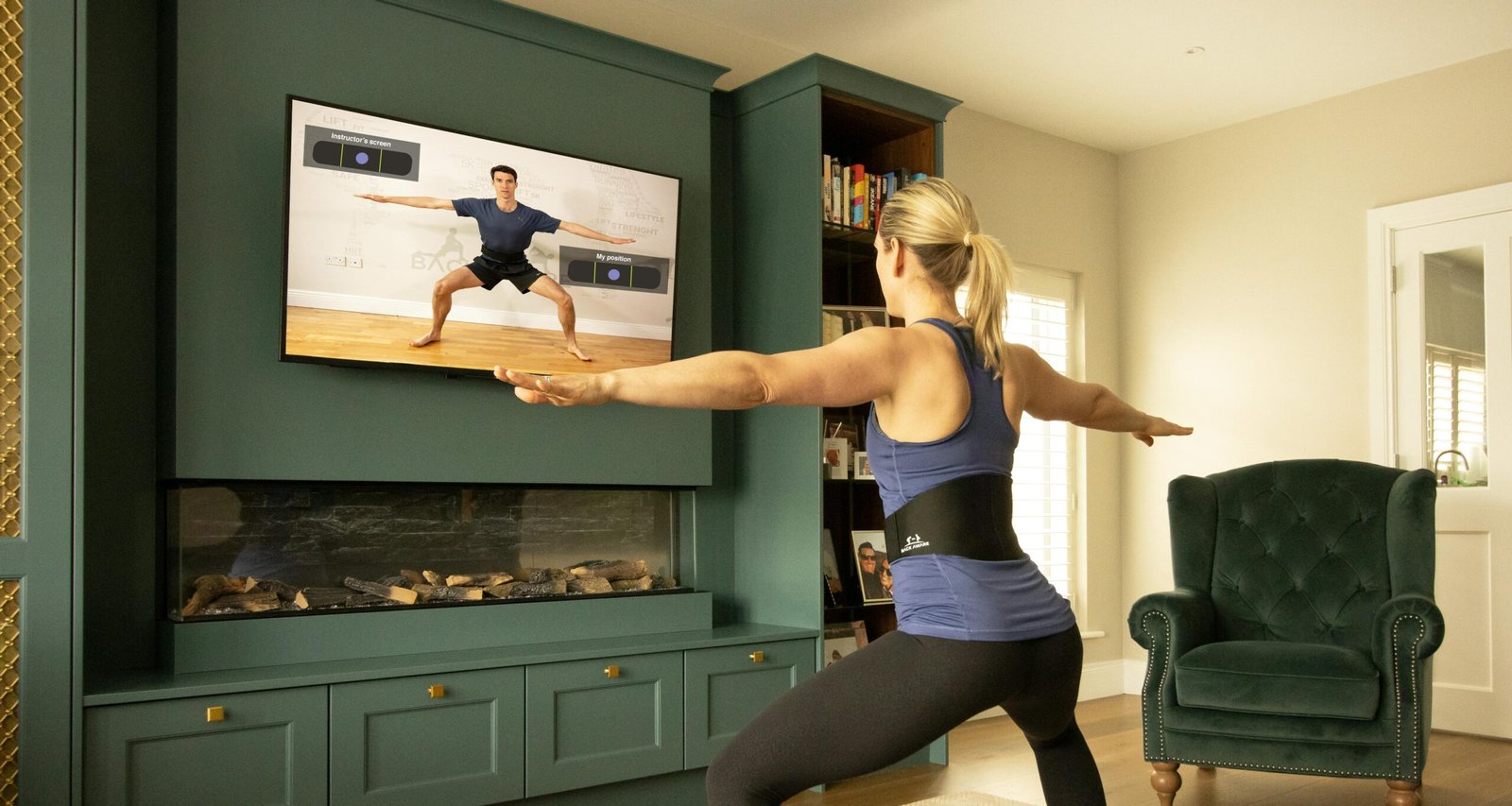Are you looking to improve your overall wellness and fitness levels in a way that also benefits your day-to-day activities? Look no further than functional fitness training! By focusing on movements that mimic real-life tasks, functional fitness training helps you build strength, flexibility, and balance – elements that are essential for staying healthy and active in your everyday life. Say goodbye to tedious workouts that don’t contribute much to your well-being, and say hello to a more functional approach to fitness that will leave you feeling strong, energized, and ready to take on whatever life throws your way. Let’s explore how functional fitness training can help you maximize your everyday wellness and achieve your fitness goals. Have you ever felt that traditional workouts at the gym don’t quite translate to improved daily activities or overall well-being? Functional fitness training could be the solution you’ve been looking for. By focusing on exercises that mimic real-life movements, functional fitness training can help you improve your strength, flexibility, balance, and stamina in ways that directly impact your everyday life. Let’s delve deeper into how you can maximize your everyday wellness with functional fitness training.

This image is property of images.pexels.com.
Understanding Functional Fitness Training
Functional fitness training is a type of exercise that focuses on movements that are essential for daily activities. These exercises are designed to help you perform tasks more efficiently and with reduced risk of injury by improving your overall strength, flexibility, balance, and endurance. Unlike traditional gym workouts that often isolate specific muscle groups, functional fitness training emphasizes movements that engage multiple muscle groups and joints simultaneously.
When you incorporate functional fitness training into your routine, you’re not just working out for the sake of burning calories or building muscle. Instead, you’re training your body to function better in the real world. This type of training is particularly beneficial for individuals who want to enhance their performance in activities like lifting heavy objects, carrying groceries, playing sports, or simply moving through daily tasks with ease.
Benefits of Functional Fitness Training
Functional fitness training offers a wide range of benefits that can positively impact your everyday wellness. Here are some key advantages of incorporating functional fitness exercises into your workout routine:
-
Improved Functional Strength: Functional fitness exercises target multiple muscle groups and joints, helping you develop strength that is directly applicable to real-life activities. This can make tasks like carrying heavy objects, pushing and pulling, and walking up stairs much easier.
-
Enhanced Flexibility and Range of Motion: By engaging in movements that mimic daily tasks, you can improve your flexibility and range of motion. This can help reduce the risk of injury and make activities like bending, reaching, and twisting more comfortable.
-
Better Balance and Coordination: Functional fitness training often involves exercises that challenge your balance and coordination, helping you improve your stability and agility. This can be particularly beneficial for older adults who want to reduce their risk of falls.
-
Increased Stamina and Endurance: Functional fitness exercises are designed to improve your overall cardiovascular fitness and endurance. This can help you maintain energy throughout the day and reduce feelings of fatigue.
-
Enhanced Posture and Joint Health: Many functional fitness exercises focus on proper alignment and form, which can help improve your posture and reduce strain on your joints. This can lead to decreased pain and discomfort, especially for those who spend long hours sitting at a desk.
By incorporating functional fitness training into your workout routine, you can experience these benefits and improve your overall quality of life.
Types of Functional Fitness Exercises
Functional fitness training encompasses a wide variety of exercises that target different muscle groups and movement patterns. Here are some common types of functional fitness exercises that you can incorporate into your routine:
Squats
Squats are a fundamental functional fitness exercise that strengthens your lower body muscles, including your quadriceps, hamstrings, and glutes. This exercise mimics the movement of sitting down and standing up, making it highly effective for improving functional strength. To perform a squat, stand with your feet shoulder-width apart, lower your body by bending your knees and hips, and return to a standing position.
Lunges
Lunges are another essential functional fitness exercise that targets your lower body muscles, as well as your core and stabilizing muscles. This exercise involves stepping forward or backward and lowering your body until both knees are at 90-degree angles. Lunges help improve balance, coordination, and leg strength, making them a valuable addition to any functional fitness workout.
Deadlifts
Deadlifts are a compound exercise that targets multiple muscle groups, including your hamstrings, glutes, back, and core. This exercise mimics the movement of picking up objects from the ground, making it highly functional for daily activities. To perform a deadlift, stand with your feet hip-width apart, bend at the hips and knees to lower your body, then return to a standing position by driving through your heels.
Push-ups
Push-ups are a classic functional fitness exercise that targets your chest, shoulders, triceps, and core muscles. This exercise involves lowering your body to the ground and pushing back up, mimicking movements like pushing heavy objects or getting up from the floor. Push-ups are excellent for building upper body strength and improving overall functional fitness.
Planks
Planks are a core-strengthening exercise that also engages your shoulders, back, and glutes. This exercise involves holding a push-up position with your body in a straight line from head to heels. Planks help improve stability, posture, and endurance, making them an essential component of any functional fitness routine.
These are just a few examples of functional fitness exercises that you can incorporate into your workout routine. By focusing on movements that mirror real-life activities, you can improve your strength, flexibility, balance, and endurance in ways that directly impact your daily well-being.

This image is property of images.pexels.com.
Designing a Functional Fitness Workout
To maximize the benefits of functional fitness training, it’s essential to design a well-rounded workout routine that targets different movement patterns and muscle groups. Here are some key principles to keep in mind when creating a functional fitness workout:
Balance Your Movements
When designing a functional fitness workout, aim to include exercises that target all major muscle groups and movement patterns. This can help you develop balanced strength and prevent muscle imbalances that can lead to injury. For example, if you include squats to target your lower body, be sure to also incorporate upper body exercises like push-ups or rows.
Progress Gradually
It’s important to gradually increase the intensity and complexity of your functional fitness workouts to continue challenging your body and making progress. Start with basic exercises and gradually incorporate more advanced variations or additional resistance. This can help prevent plateaus and ensure that you continue to see improvements in strength, flexibility, and endurance.
Focus on Form and Technique
Proper form and technique are crucial when performing functional fitness exercises to prevent injury and maximize effectiveness. Take the time to learn the correct form for each exercise and focus on maintaining good posture throughout your workout. If you’re unsure about the proper technique, consider working with a certified trainer to ensure you’re performing the exercises correctly.
Incorporate Variety
To keep your workouts engaging and effective, be sure to incorporate a variety of functional fitness exercises into your routine. This can help prevent boredom, work different muscle groups, and improve overall functional fitness. You can mix and match exercises like squats, lunges, deadlifts, push-ups, planks, and more to create a well-rounded workout that targets different areas of the body.
Listen to Your Body
As with any form of exercise, it’s essential to listen to your body and pay attention to how you’re feeling during your workouts. If you experience pain or discomfort while performing an exercise, stop immediately and consult a healthcare professional or fitness trainer. It’s important to prioritize safety and avoid pushing yourself beyond your limits to prevent injuries.
By following these principles and designing a functional fitness workout that is challenging, balanced, and varied, you can maximize the benefits of this training style and improve your overall well-being.
Incorporating Functional Fitness into Your Routine
Now that you understand the principles of functional fitness training and how to design a workout routine, it’s time to incorporate these exercises into your daily life. Here are some tips for integrating functional fitness into your routine:
-
Start Slow: If you’re new to functional fitness training, start with basic exercises and gradually increase the intensity and complexity as you build strength and confidence. This can help prevent injury and ensure that you’re performing the exercises correctly.
-
Make it Convenient: Look for opportunities to incorporate functional fitness exercises into your daily activities. For example, you can practice squats while brushing your teeth or do lunges while waiting for the coffee to brew. By incorporating these movements into your routine, you can improve your functional fitness without adding extra time to your day.
-
Stay Consistent: Consistency is key when it comes to functional fitness training. Aim to incorporate these exercises into your routine at least 2-3 times per week to see the most significant benefits. By making functional fitness a regular part of your workout routine, you can improve your strength, flexibility, balance, and endurance over time.
-
Track Your Progress: Keep a workout journal or use a fitness app to track your progress and monitor your improvements over time. This can help you stay motivated and make adjustments to your workout routine as needed. By setting specific goals and tracking your progress, you can see tangible results from your functional fitness training.
-
Seek Professional Guidance: If you’re unsure about how to incorporate functional fitness exercises into your routine or if you want personalized guidance, consider working with a certified personal trainer. A trainer can help you design a customized workout plan, teach you proper form and technique, and provide motivation and support to help you reach your fitness goals.
By following these tips and incorporating functional fitness exercises into your routine, you can maximize your everyday wellness and improve your quality of life. Whether you’re looking to enhance your strength, flexibility, balance, or endurance, functional fitness training offers a practical and effective way to achieve your fitness goals.
In conclusion, functional fitness training is a valuable tool for maximizing your everyday wellness and enhancing your quality of life. By focusing on movements that mimic real-life activities and improving your strength, flexibility, balance, and endurance, you can see significant improvements in your overall well-being. Whether you’re a fitness enthusiast looking to take your workouts to the next level or someone who wants to improve their daily activities, functional fitness training has something to offer everyone. So why not give it a try and see the difference it can make in your life? Start incorporating functional fitness exercises into your routine today and reap the benefits of improved functional strength, flexibility, balance, and endurance. Your body will thank you!
